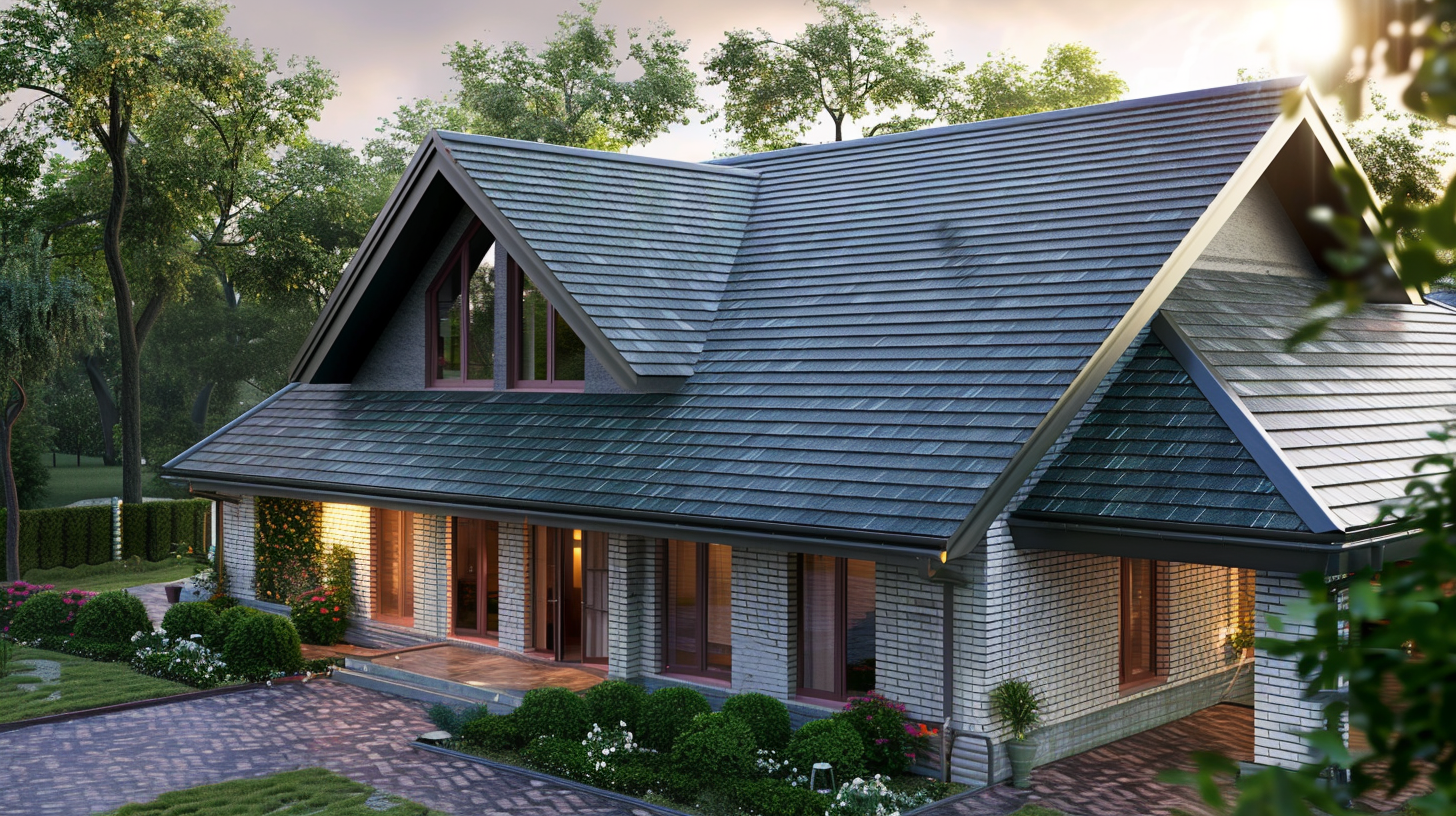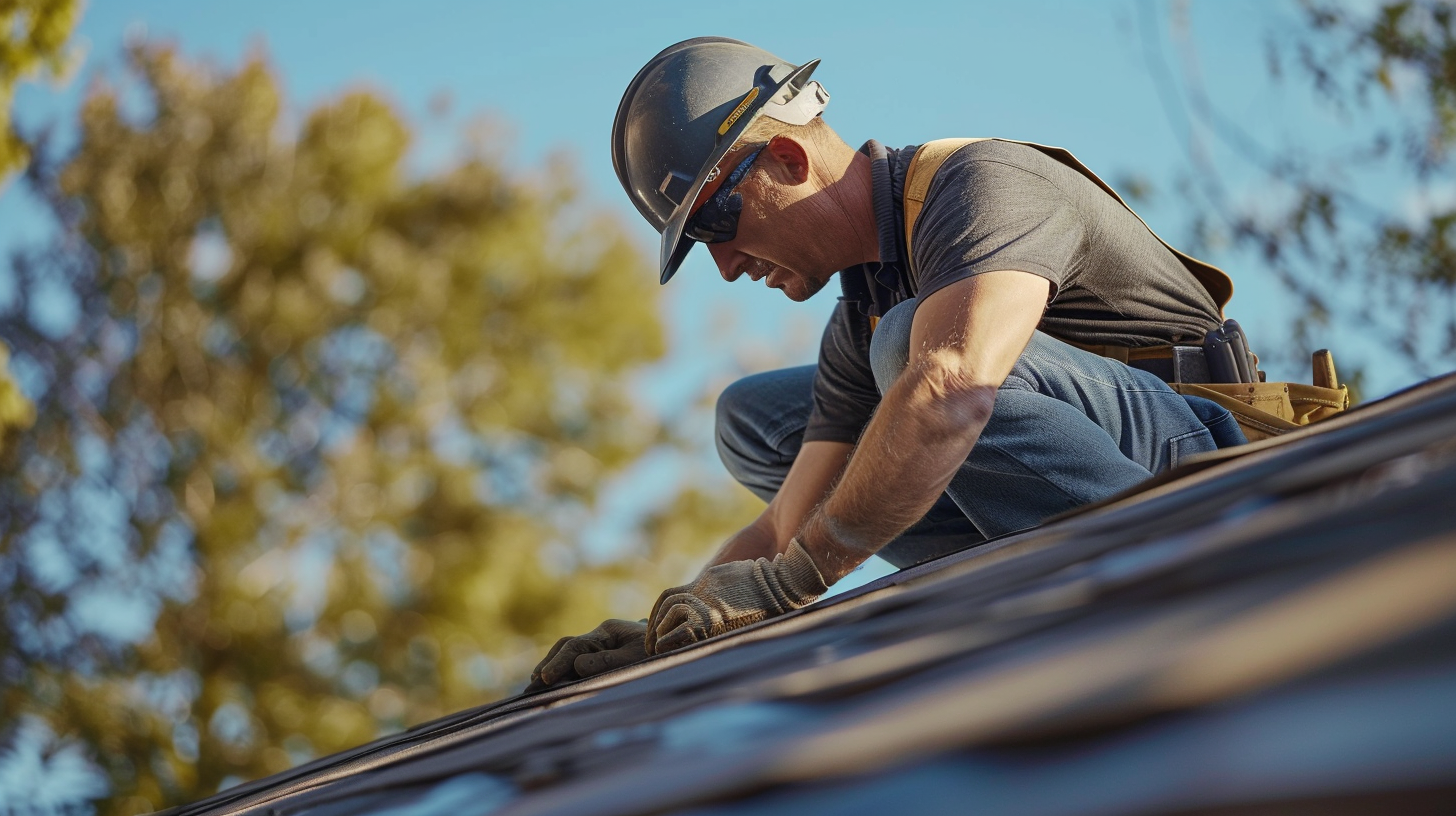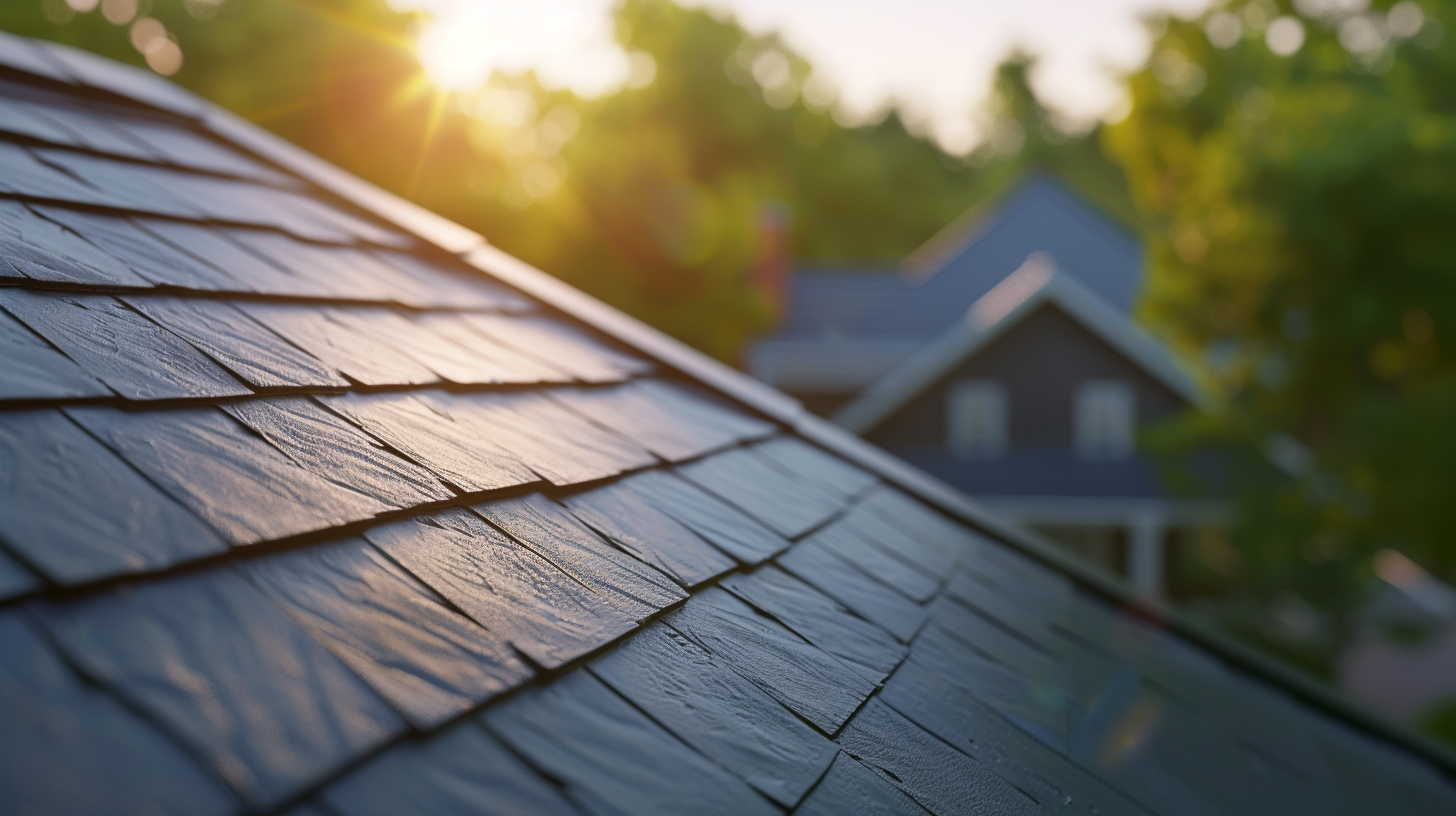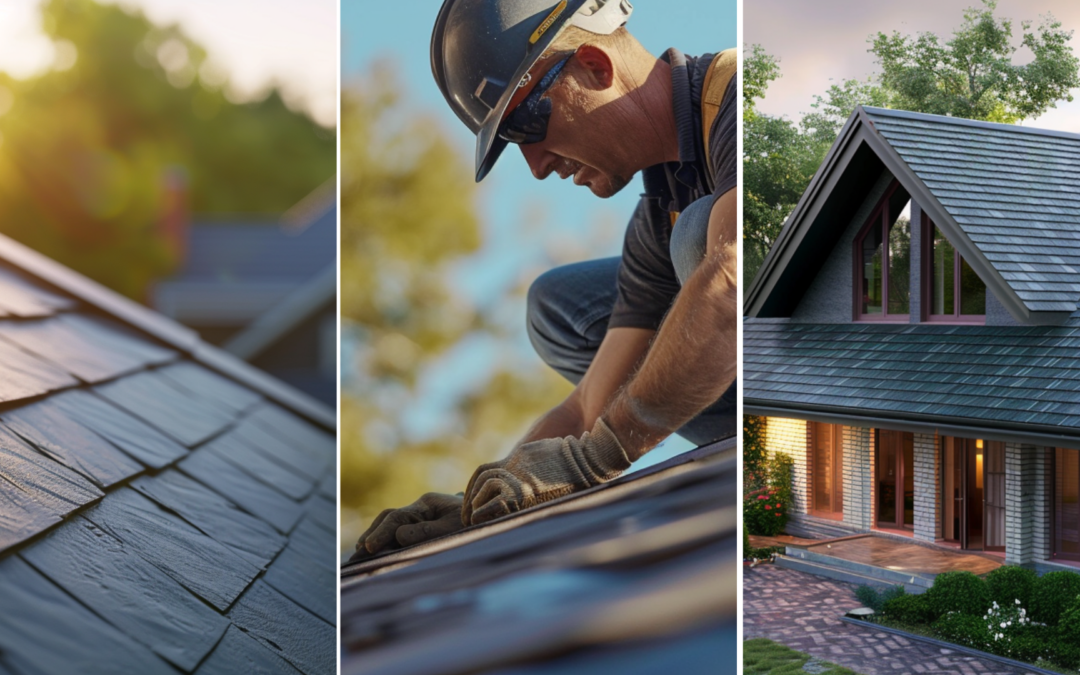Rubber Roofs
Overview of Rubber Roofing Membranes
In commercial roof systems, choosing a suitable flat roofing material is crucial. A flat roofing project must consider cost, durability, and maintenance. Due to their specific benefits, EPDM, TPO, and PVC are popular choices for commercial roof systems. While EPDM is a shared roof material for its cost-effectiveness and ease of installation, TPO offers additional energy efficiency, making it suitable for environmentally conscious projects. PVC, though the most expensive, provides the most extended lifespan and the highest resistance to environmental factors, making it ideal for long-term flat roofing projects.

Rubber Roofs - Benefits of Rubber Roofs - Sky Roofing Construction & Remodeling
Benefits of Rubber Roofs
Rubber shingles, made from synthetic rubber membranes such as ethylene propylene diene monomer (EPDM), are known for their flexible rubber material, contributing to their durability and ease of installation. The application methods for rubber roofs are straightforward, further adding to their appeal. Despite the initial labor cost, long-term maintenance and energy efficiency savings make rubber roofs cost-effective.
Durability
Furthermore, rubber roofs are low-maintenance and eco-friendly, making them cost-effective for long-term roofing needs. The material requires minimal upkeep, saving homeowners time and money in the long run. Additionally, rubber roofing is eco-friendly as it is often made from recycled materials and is fully recyclable at the end of its lifespan.
For roof installation, rubber roofing materials are lightweight, which eases the process and minimizes strain on the structural integrity of the building. Rubber roofing can be an excellent repair material when undertaking a complete tear-off of an old roof, providing a new, durable layer without adding significant weight. Using rubber roofing for flat and low-sloped roofs enhances the overall efficiency and longevity of the roofing system, making it a wise investment for property owners.
Energy Efficiency
Proper installation is crucial for low-sloped or flat roofs to maximize the benefits of EPDM and other single-ply roofing systems. Single-ply roofing systems like EPDM, TPO, and PVC are popular options. However, their suitability for different climates varies. EPDM is a versatile choice that performs well in various climates. TPO is known for its heat resistance, making it ideal for warm regions. PVC, on the other hand, is highly resistant to chemicals and extreme temperatures, making it suitable for harsh environments.
When considering cost-effectiveness, EPDM has an advantage over other commercial roofing systems. It is relatively affordable compared to alternatives like PVC and offers good durability, requiring less maintenance and potential repairs in the long run. Attention to factors such as proper installation and membrane color can further enhance the performance and longevity of EPDM roofing systems, making them an intelligent choice for various roofing projects.

Rubber Roofs - Low Maintenance - Sky Roofing Construction & Remodeling
Low Maintenance
With EPDM roofing, the top maintenance practices include regular inspections, prompt damage repair, regular cleaning, and patching as needed. By following these practices, homeowners can ensure the longevity and durability of their rubber roofs, extending the roof life beyond the average roof lifespan. Choosing quality roof materials and hiring an experienced rubber roofing contractor can further enhance the performance and durability of the roof.
Cost-Effective
Rubber roof installation is straightforward, making it an appealing application for rubber roofing in new builds and roof replacement projects. While the initial installation might have an additional cost, the long-term savings in maintenance costs make it a cost-effective choice. Regular maintenance is essential to maximize roof performance and longevity, ensuring low maintenance costs.
The average cost of rubber roofing varies, but its affordability, low maintenance requirements, and ease of repair make it a competitive option. Property owners can achieve a durable, long-lasting roofing solution that minimizes additional costs associated with frequent repairs or premature replacements by selecting quality commercial roofing materials and ensuring proper installation.

Rubber Roofs - Types of Rubber Roofs - Sky Roofing Construction & Remodeling
Types of Rubber Roofs
Rubber roofing is a cost-effective and resilient choice when considering roof options. Popular alternatives to rubber roofing include modified bitumen and built-up roofs, but EPDM’s ease of maintenance and longevity make it an attractive option for roofs of various types. To install rubber roofing, professionals often consider the specific requirements of the building and choose the most suitable type of rubber roofing system. This ensures the installation is effective and long-lasting, providing reliable protection against weather and environmental damage.
EPDM Rubber Roofs
EPDM rubber roofs are also highly resistant to water damage, which minimizes the risk of leaks over time. Regular maintenance is essential for preserving their durability and functionality. EPDM roofs require minimal upkeep, typically regular inspections, cleaning, and promptly addressing potential leaks or damage.
TPO Rubber Roofs
Moreover, TPO roofs contribute to a property’s curb appeal, with their sleek and modern appearance enhancing the overall aesthetic appeal. Proper roof maintenance is essential to preserve this appeal and extend the lifespan of TPO roofs. Regular inspections and maintenance procedures help promptly identify and address any issues, ensuring the roofing system’s integrity. Additionally, attention to details such as roof penetrations, such as vents and chimneys, is crucial to prevent potential leaks and maintain the effectiveness of the TPO roofing system.
PVC Rubber Roofs
Furthermore, PVC rubber roofing is a roof membrane type known for its energy efficiency and durability. Its reflective properties help to reduce cooling costs and improve overall energy conservation. These roofs are also well-suited for accommodating rooftop equipment, providing a durable and stable surface for installations such as HVAC systems and solar panels.
Discover the Benefits of Rubber Roofs with Sky Roofing Construction & Remodeling
Rubber roofs offer a durable, energy-efficient, and low-maintenance solution for residential and commercial buildings. Whether you’re interested in EPDM, TPO, or PVC rubber roofs, understanding their unique benefits can help you decide on your property. Contact Sky Roofing Construction & Remodeling (https://skyroofingconstructiontx.com) today to schedule a free roofing quotation and discover how rubber roofs can enhance your building’s longevity and efficiency. Call (210) 942-9797 to get started!
Tasha Davis is a knowledgeable contributor to Sky Roofing Construction & Remodeling, with a specialty in roofing project management and customer service excellence. Tasha’s experience in overseeing large-scale roofing projects ensures that her writing is both practical and customer-focused, providing homeowners with tips on navigating the roofing process smoothly and ensuring their satisfaction from start to finish.

